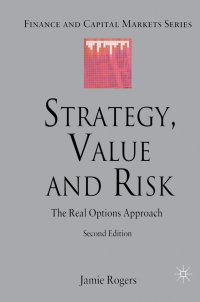Look at the equation carefully and it's not the same as the others

From the explorations in the previous section, you likely realized that an exponential model is not appropriate for predicting the behavior of the epidemic beyond the first few months after the initial outbreak. A limited growth model can be used to more accurately describe the total number cases of Ebola in West Africa. 1. Limiting the spread of the disease. (a) Suppose the countries of Guinea, Liberia, and Sierra Leone are quarantined so that no person is allowed to enter or leave the countries. What would be an upper bound on the number of total cases of Ebola? Are you making additional assumptions about the disease when determining this upper bound? w Ebola Outbreak in West Africa (b) List a few other factors that could limit the total number of individuals who may become infected with the disease during the outbreak. One model that incorporates limited growth is the logistic or Verhulst model. dN/dt = kN(M-N) k,M>0 (1) In the logistic growth model (1) k is the intrinsic growth rate. This model is often associated with population growth, however it is also sometimes used to reflect the spread of contagious diseases. 2. Basic properties of the logistic growth model. (a) Based on the differential equation (1) above, for what intervals of N will the function N(t) be increasing? Decreasing? For the given situation and interpretation of N, is it realistic for N to decrease? (6) When the number of cases N is close to M, what can you say about the rate (dN/dt) at which the disease is spreading? Write your answer in words and mathematically as a limit. (c) How does your upper bound for the total number of cases found in Part I relate to M in the differential equation (1)? Which value will be greater? (d) When the number of cases is small, what can you say about the rate (dN/dt) at which the disease is spreading? Compare to the exponential growth model from Part I. From the last observation and our work from the previous section, we can conclude that in the early months after the outbreak, the spread of the Ebola virus is exponential. Thus, we may use the constant of proportionality determined in Part I for the parameter k here. However, we know that the outbreak of Ebola in West Africa did not reach the entire populations of the three countries discussed here. Thus, to develop a model with better accuracy, we must determine a more realistic value for M. To do so, we continue investigating the properties of the logistic growth model. In order to demonstrate limited growth, or a maximum number of total cases, the growth rate must transition from a rate that increases to a decreasing rate. That is, the number of new cases per month must begin to decline. This transition occurs at an inflection point on the graph of N(t). 5 Ebola Outbreak in West Alrica 3. Inflection point and carrying capacity in the logistic growth model. (a) Use a plot of the data from Table 1 or compute the average growth rate from month to month to determine the approximate coordinates (t, N) for the inflection point in the data. (b) Use implicit differentiation and substitution to determine the inflection point of N(C) Combine the previous two parts to give an estimate for M. 4. Expression for N(t). (a) Solve the separable differential equation (1) You can follow the discussion in our Text pages 18 & 19.. (6) Use your growth rate from the exponential model for k and the value for M from above to write N (t) representing the total number of cases of Ebola in West Africa at time t months. Graph N(t) for t=0, 1, 2p..., 24. (Use software or a calculator) (c) Compare the graph of N(t) to your sketch (in the previous section ( Part 13 (e) on exponential growth) depicting the behavior of the epidemic that you expect. 5. Model predictions and verification. (a) Use your equation for N(t) to estimate the total number of cases of Ebola for times t-3 and 10 months. (b) Compare the predicted values from the previous part to the data in Table 1 and to the results from the exponential model in Part I. (c) Remark on the performance of the logistic model when used to depict the Ebola outbreak during its first ten months. State your expectations for the performance and accuracy of the model for the duration of the epidemic. (a) Compare the results of the logistic growth model to the data reported by the World Health Organization for 15t524 in Tables 1 and 2. Show comparisons using both a table and a graph. 6. Conclusion. (a) Give a brief summary of your findings from Part II including strengths and weaknesses of using logistic growth to model the Ebola virus outbreak in West African countries as compared with the simple exponential model from Part 1. Consider the impact M on the accuracy of the logistic model and address whether it is reasonable to develop and use this model during an outbreak, (such as the current Covid-19 pandemic) in particular early on before the inflection point appears in the data









